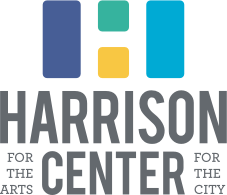"Lathe | Lens" & Legacy
Come to our upcoming First Friday event, July 6th 6:00-9:00pm, and be one of the first lucky viewers of Tom Peck’s show in the Speck Gallery. Peck’s humility and candidness gracefully frames his show, “Lathe | Lens,” which will feature a mixture of photography and woodturning. Both of the seemingly disparate mediums fulfill his desire to capture and showcase the naturally-occuring glimpses of beauty that pass by unnoticed more often than not.
A graphic-designer by trade, Peck’s intentionality and attention to simple beauty is apparent in every piece in “Lathe | Lens.” You’d never know that Peck’s photography is a bit of a self-described experiment-- thanks to his trained eye, his essence as an artist is a shared thread throughout his work. He explained that his design background has aided his exploration of both mediums which have felt “simply like extensions of what he’s always done:” e.g., when he is seeking out the potential “shape and curve and actual look of a raw piece of wood.”
Even before he begins his subtractive process, the local wood that Peck uses is rarely untouched. He’s found that “the things that traumatize wood--like insects, bacteria, fire--bring out a real strange beauty.” Peck’s woodturning gives purpose to things that had been initially labeled by society as useless. When talking about an old project where he made a communion chalice out of a friend’s damaged firewood, he said “In one respect, I’m redeeming the wood that’s destined for the fire just in the way that God redeems us from the fire.” Peck added the caveat that when woodturning, you are cutting away what you don’t want, but I believe there’s still potential for some metaphors of hope in the subtractive process as well.
In a similar way, his photography aims to prolong the flashes of natural beauty that we as a collective society usually don’t give a second glance to-- often because we don’t want to take the time to notice our surroundings. This concept can be seen in Peck’s favorite photo in the exhibit “Peruvian Color.”
Time is one of the few, significant differences between Peck’s photography and woodturning. His photography is all about “capturing those quick moments in time, and on the other side woodturning does take awhile;” one project could take anywhere from “6 months to a year!” The lengthy process is broken up in stages of treating the wood with product and then waiting for it to dry in order to “naturally eliminate the possibility of it splitting” as much as possible.
Similar to his patience to observe nature’s fleeting moments of awe, Peck is not daunted at all by woodturning’s time commitment. Since he’s been perfecting this craft for about a decade, he has an “inventory of wood at various stages” to choose from and he finds it “kinda fun to know that I can come back to this piece.” This method is also another way for the wood to show Peck what it wants to become, as not all pieces will make it out of the process without splitting.
Shagbark Hickory Bowl
However, Peck did assure me--true to his original artistic intention--that even if it does split there are ways to problem-solve in order to make it “a happy accident;” an example of this from the upcoming exhibit is the “Shagbark Hickory Bowl.”
Peck added that “Lathe | Lens” has significant meaning even beyond the depth of his artwork: “It’s an incredible honor to be showing my work in the Speck Gallery which was named in my son Stephen Peck’s memory.” Stephen was a well-loved, established artist and musician who passed away in 2014 due to congenital heart defects; he lived his 28 years fully and said, “I do everything with half a heart, but I don’t do anything half-heartedly.”
Stephen’s charisma, creativity, and irrepressible love for life and art still lives on today, thanks to The Speck Fund and, of course, The Speck Gallery. This is the first time Tom Peck will be showing his own work in this space dedicated to his son’s lasting legacy of art advocacy, community building, and creative endeavors. When asked what Peck hopes viewers will gain from his exhibit, he “certainly would want them to come away with a greater appreciation of beauty and of nature.”


